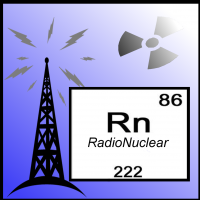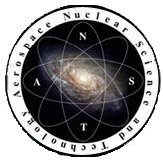Nuclear tech in space: What’s on the horizon?

Illustration of a Mars transit habitat and nuclear electric propulsion system. Image: NASA
NASA aims to develop nuclear technologies for two space applications: propulsion and surface power. Both can make planned NASA missions to the moon more agile and more ambitious, and both are being developed with future crewed missions to Mars in mind. Like advanced reactors here on Earth, space nuclear technologies have an accelerated timeline for deployment in this decade.
Space nuclear propulsion and extraterrestrial surface power are getting funding and attention. New industry solicitations are expected this month, and a range of proposed reactor technologies could meet NASA’s specifications for nuclear thermal propulsion (NTP). Nuclear electric propulsion could increase the feasibility of crewed missions to Mars with a shorter transit time, a broader launch window and more flexibility to abort missions, reduced astronaut exposure to space radiation and other hazards, expanded payload mass capabilities, and reduced cost.





 Welcome to the New Year! Even though I am on the road, there is just so much happening lately in nuclear I could not pass up the opportunity to talk about it!
Welcome to the New Year! Even though I am on the road, there is just so much happening lately in nuclear I could not pass up the opportunity to talk about it!  ANS member Dr. Christopher Morrison was a recent guest on
ANS member Dr. Christopher Morrison was a recent guest on  Cassini-Huygens is a Flagship-class NASA-ESA-ASI robotic spacecraft sent to the Saturn system. It has studied the planet and its many natural satellites since its arrival there in 2004, as well as observing Jupiter and the Heliosphere, and testing the theory of relativity. Launched in 1997 after nearly two decades of gestation, it includes a Saturn orbiter Cassini and an atmospheric probe/lander Huygens that landed in 2005 on the moon Titan. Cassini is the fourth space probe to visit Saturn and the first to enter orbit, and its mission is ongoing as of 2013. It is powered by a plutonium power source, and has facilitated many landmark scientific discoveries in its mission to the stars.
Cassini-Huygens is a Flagship-class NASA-ESA-ASI robotic spacecraft sent to the Saturn system. It has studied the planet and its many natural satellites since its arrival there in 2004, as well as observing Jupiter and the Heliosphere, and testing the theory of relativity. Launched in 1997 after nearly two decades of gestation, it includes a Saturn orbiter Cassini and an atmospheric probe/lander Huygens that landed in 2005 on the moon Titan. Cassini is the fourth space probe to visit Saturn and the first to enter orbit, and its mission is ongoing as of 2013. It is powered by a plutonium power source, and has facilitated many landmark scientific discoveries in its mission to the stars. The 2013 ANS Topical Meeting on Nuclear and Emerging Technologies for Space (NETS 2013) will be held February 25-28, 2013, at the Albuquerque Marriott in Albuquerque, New Mexico.
The 2013 ANS Topical Meeting on Nuclear and Emerging Technologies for Space (NETS 2013) will be held February 25-28, 2013, at the Albuquerque Marriott in Albuquerque, New Mexico.